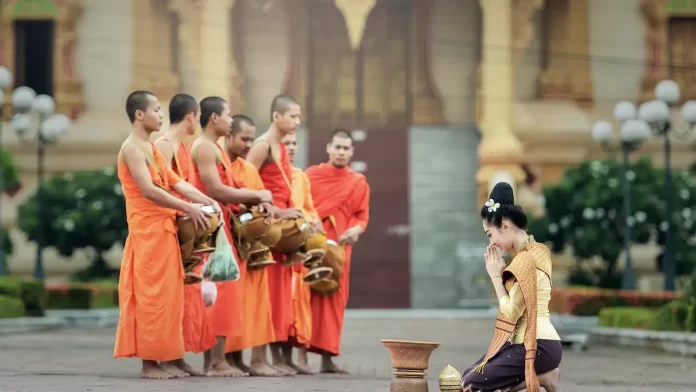Gautama Buddha, the founder of Buddhism, is often revered for his teachings of compassion, wisdom, and liberation from suffering. However, his opinions on women and their roles within the Sangha, the community of Buddhist practitioners, have sparked debate and reflection throughout history.
The establishment of the Bhikkhuni Sangha, the order of Buddhist nuns, reveals a nuanced aspect of the Buddha’s perspective on women.
Initially hesitant, the Buddha eventually relented to the persistent requests of his disciple Ananda and his aunt, Mahapajapati Gotami, to allow women to join the monastic community. This decision marked a significant step towards gender equality within the Buddhist tradition.
However, the inclusion of women in the Sangha came with restrictions and conditions. Pregnant women, mothers of young children, rebellious women, those associating closely with men, and those without permission from their parents or husbands were not allowed to join. These guidelines reflect societal norms of the time, which placed limitations on women’s autonomy and agency.
Furthermore, the Buddha is said to have instituted eight special rules, or garudhammas, that placed the order of nuns subordinate to that of monks. These rules, while contentious, were likely influenced by the cultural context of ancient India, where patriarchy was deeply entrenched.
Despite these restrictions, the presence of the Bhikkhuni Sangha provided women with the opportunity to pursue spiritual practice and liberation within the Buddhist tradition.
One of the most controversial aspects of the Buddha’s views on women is the belief that women could attain salvation but not Buddhahood directly. According to some interpretations, the Buddha suggested that women must first be reborn as men before achieving enlightenment.
This belief has been a source of contention and criticism, as it seems to imply inherent limitations on women’s spiritual potential.
However, it is essential to consider these views within the context of their time. The Buddha’s teachings were revolutionary in many respects, challenging societal norms and advocating for the equality and liberation of all beings. Yet, he was also a product of his cultural and historical environment, which shaped his perspectives on gender and other social issues.
Also Read| Gautam Buddha on Caste System and Human Suffering
Despite the challenges and limitations imposed on women within the Sangha, many women found inspiration and empowerment through the teachings of the Buddha.
Stories of enlightened nuns, such as Mahapajapati Gotami, the first ordained woman in the Buddhist tradition, serve as a testament to the transformative power of the Dharma, or Buddhist teachings, regardless of gender.
In modern times, Buddhist communities continue to grapple with questions of gender equality and inclusion. Efforts to reexamine and reinterpret the Buddha’s teachings through a contemporary lens have led to greater recognition of women’s contributions to the Sangha and a more inclusive approach to spiritual practice.
In conclusion, Gautama Buddha’s opinions on women in the Sangha were complex and influenced by the cultural context of his time. While he advocated for the inclusion of women in the monastic community, his views were also shaped by prevailing social norms and beliefs.
Despite the challenges faced by women in the ancient Buddhist world, their presence within the Sangha underscores the universal potential for liberation and enlightenment, irrespective of gender.
Given below are some authoritative sources that provide insight into Gautama Buddha’s views on women and their roles in the Sangha:
- “The Life of the Buddha” by Bhikkhu Ñāṇamoli: This biography of the Buddha provides historical context and details about his interactions with women, including the establishment of the Bhikkhuni Sangha.
- “The Bhikkhunī Pātimokkha of the Six Schools” translated by Bhikkhu Brahmali: This text contains the rules and regulations governing the conduct of Buddhist nuns, shedding light on the specific guidelines imposed on women within the monastic community.
- “The First Buddhist Women: Translations and Commentary on the Therigatha” by Susan Murcott: This book offers translations and analysis of the verses attributed to the early Buddhist nuns, providing insights into their experiences and spiritual achievements.
- “Women in Buddhism: Images of the Feminine in the Mahayana Tradition” by Diana Y. Paul: This scholarly work examines the portrayal of women in Buddhist literature and the evolution of gender roles within the tradition, offering valuable perspectives on the status of women in Buddhism.
- “Buddhism, Sexuality, and Gender” edited by José Ignacio Cabezón: This anthology explores the intersection of Buddhism with issues of sexuality and gender, including discussions on women’s participation in the Sangha and the interpretation of Buddhist teachings regarding gender.
These sources, among others, contribute to a deeper understanding of Gautama Buddha’s perspectives on women and their roles within the Buddhist tradition, providing valuable context and analysis for further exploration.
